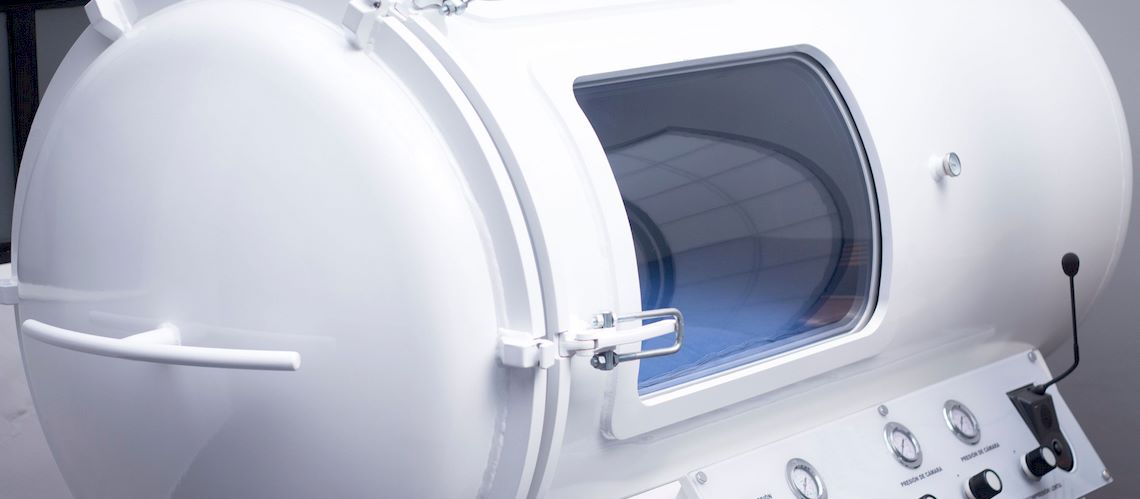Hyperbaric Oxygen Therapy (HBOT) is a medical treatment that involves breathing pure oxygen in a pressurized environment. This therapy significantly increases the amount of oxygen in the blood, which can accelerate healing, reduce inflammation, and improve overall health. Within the CORE Compass framework, HBOT can play a vital role in enhancing Operational and Physical Vitality, fostering Curiosity and Cognitive Growth, promoting Resilience and Emotional Equilibrium, and nurturing Spiritual Harmony. This article explores how integrating HBOT into your routine can optimize well-being across these core aspects of life, backed by credible scientific research.
Application in CORE Compass
- Operational and Physical Vitality
HBOT supports this aspect by enhancing wound healing, reducing inflammation, and promoting faster recovery from surgery or injury. Research has shown that HBOT is particularly effective in treating chronic wounds, such as diabetic foot ulcers, by improving oxygen delivery to damaged tissues and accelerating the healing process (Löndahl et al., 2010). Moreover, HBOT has been demonstrated to enhance post-exercise recovery, increase peak power, and promote blood flow in athletes, supporting faster physical recovery and peak performance (Elliott et al., 2011). Additionally, the therapy’s ability to reduce inflammation and support immune function makes it a valuable tool for maintaining physical health and vitality (Buras, 2000). - Curiosity and Cognitive Growth
Cognitive growth is nurtured by mental clarity, focus, and the ability to learn and adapt. HBOT contributes to cognitive excellence by improving oxygen delivery to the brain, which can enhance cognitive function, memory, and mental clarity. Emerging research suggests that HBOT may benefit individuals with neurological conditions, such as traumatic brain injury (TBI) and stroke, by promoting neuroplasticity and improving cognitive outcomes (Harch et al., 2012). This makes HBOT a valuable tool for those seeking to enhance their cognitive abilities and continue their intellectual development. - Resilience and Emotional Equilibrium
Resilience and emotional equilibrium are essential for managing stress and maintaining a balanced emotional state. HBOT can help promote emotional well-being by reducing inflammation and regulating the body’s stress response. The therapy’s ability to improve oxygenation and reduce the physiological effects of stress can contribute to better mood regulation and emotional stability (Thom, 2011). This makes HBOT a useful practice for individuals looking to enhance their resilience and emotional health. - Spiritual Harmony
Achieving spiritual harmony involves creating a sense of inner peace and connection with oneself and the world. Hyperbaric Oxygen Therapy (HBOT) supports spiritual well-being by promoting physical and cognitive health. Studies by Harch et al. (2012) and Thom (2011) demonstrate that HBOT reduces inflammation and enhances mental clarity, while Efrati & Ben-Jacob (2014) highlight its role in improving neuroplasticity. These combined effects—reducing emotional stress, enhancing cognitive function, and improving physical recovery—allow individuals to focus more fully on their spiritual growth, minimizing distractions from physical and emotional discomfort.
Benefits within CORE Compass:
- Enhanced physical vitality through improved healing and reduced inflammation
- Improved cognitive function and mental clarity, supporting curiosity and growth
- Balanced emotional state and reduced stress, fostering resilience
- Greater focus on spiritual practices by alleviating physical discomfort and promoting overall well-being
How to Integrate HBOT in CORE Compass
- Identify Your CORE Goals
Determine which aspects of the CORE Compass—Operational and Physical Vitality, Cognitive Growth, Emotional Equilibrium, or Spiritual Harmony—are most relevant to your current goals. This will guide how you incorporate HBOT into your wellness routine. - Consult with a Healthcare Provider
Before starting HBOT, consult with a healthcare provider to ensure that the therapy is appropriate for your specific health needs and goals. They can provide guidance on the potential benefits and risks of HBOT based on your health profile. - Schedule Regular HBOT Sessions
Integrate HBOT sessions into your routine by scheduling them consistently. The frequency and duration of sessions will depend on your health goals and the condition being treated. Regular sessions are key to experiencing the full benefits of the therapy. - Monitor and Reflect
Keep track of your experiences and any changes in your well-being as you undergo HBOT. Reflect on how the therapy influences your physical health, cognitive performance, emotional state, and spiritual connection. Adjust your approach as needed to align with your CORE goals.
Scientific Evidence
Research consistently supports the benefits of HBOT for enhancing health and well-being across multiple dimensions. Studies have demonstrated that HBOT can improve wound healing, reduce inflammation, and support cognitive function, particularly in individuals with neurological conditions (Löndahl et al., 2010; Harch et al., 2012). Additionally, HBOT has been shown to enhance emotional resilience by improving the body’s stress response and reducing the physiological effects of stress (Thom, 2011). These findings suggest that HBOT can be a powerful tool within the CORE Compass framework for achieving holistic well-being.
Conclusion
Hyperbaric Oxygen Therapy is a versatile and effective tool for enhancing well-being within the CORE Compass framework. By incorporating HBOT into your wellness routine, you can support physical vitality, sharpen cognitive abilities, balance your emotional state, and foster spiritual harmony. Embracing HBOT as part of your holistic wellness strategy can help you achieve and maintain balance and excellence across all aspects of your life.
References
- Buras, J. A. (2000). Basic mechanisms of hyperbaric oxygen in the treatment of ischemic-reperfusion injury. International Anesthesiology Clinics, 38(1), 91-109.
- Elliott, S. D., McKenna, M. J., Goodman, C. A., et al. (2011). Hyperbaric oxygen therapy improves 100% oxygen peak power and increases post-exercise blood flow in competitive cyclists. European Journal of Applied Physiology, 111(7), 1391-1400.
- Efrati, S., & Ben-Jacob, E. (2014). Reflections on the neurotherapeutic effects of hyperbaric oxygen. Dementia and Geriatric Cognitive Disorders, 38(5-6), 268-274.
- Harch, P. G., Andrews, S. R., Fogarty, E. F., et al. (2012). A phase I study of low-pressure hyperbaric oxygen therapy for blast-induced post-concussion syndrome and post-traumatic stress disorder. Journal of Neurotrauma, 29(1), 168-185.
- Löndahl, M., Katzman, P., Hammarlund, C., et al. (2010). Hyperbaric oxygen therapy facilitates healing of chronic foot ulcers in patients with diabetes. Diabetes Care, 33(5), 998-1003.
- Thom, S. R. (2011). Hyperbaric oxygen: Its mechanisms and efficacy. Journal of Applied Physiology, 106(1), 379-382.




